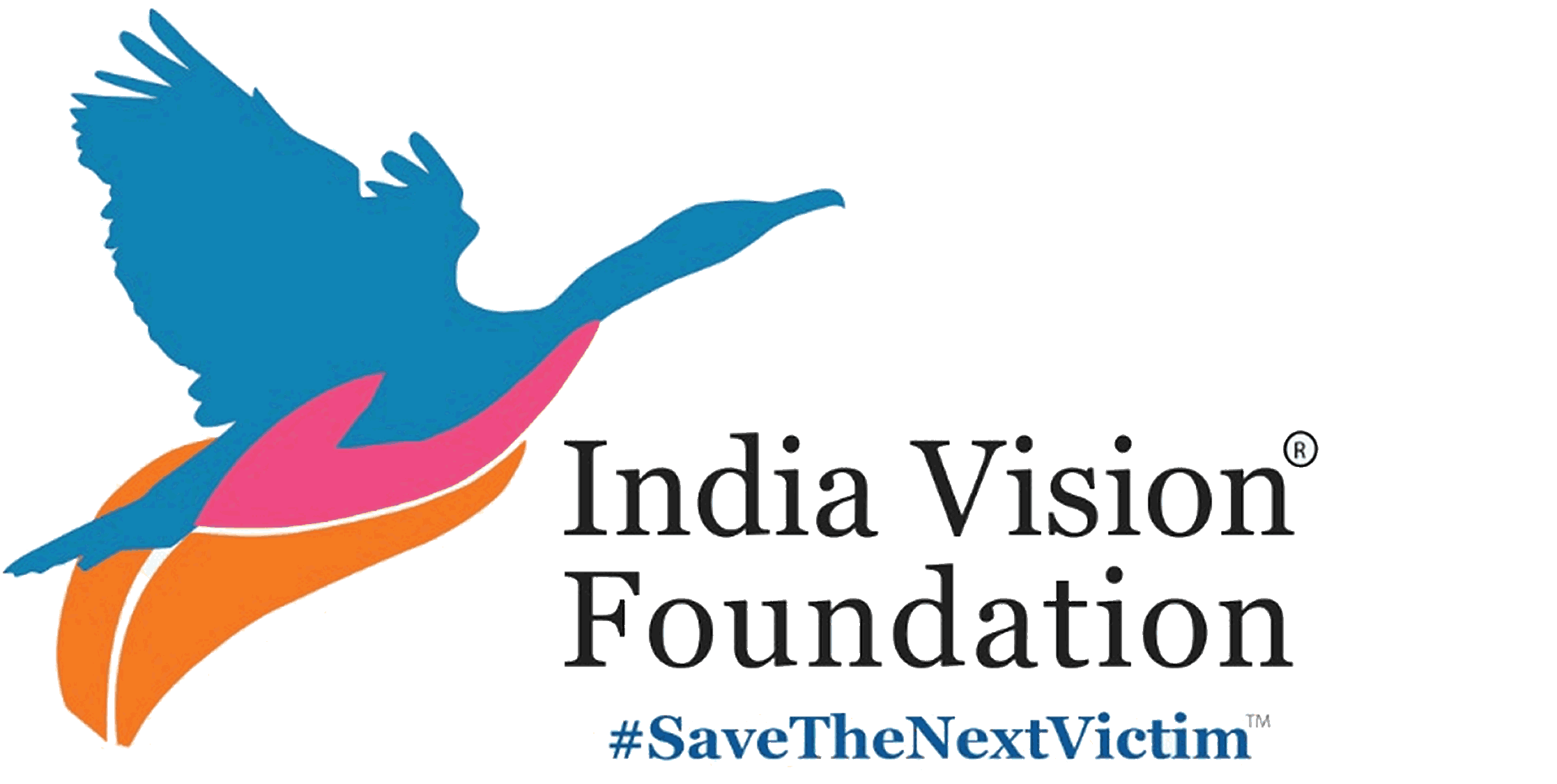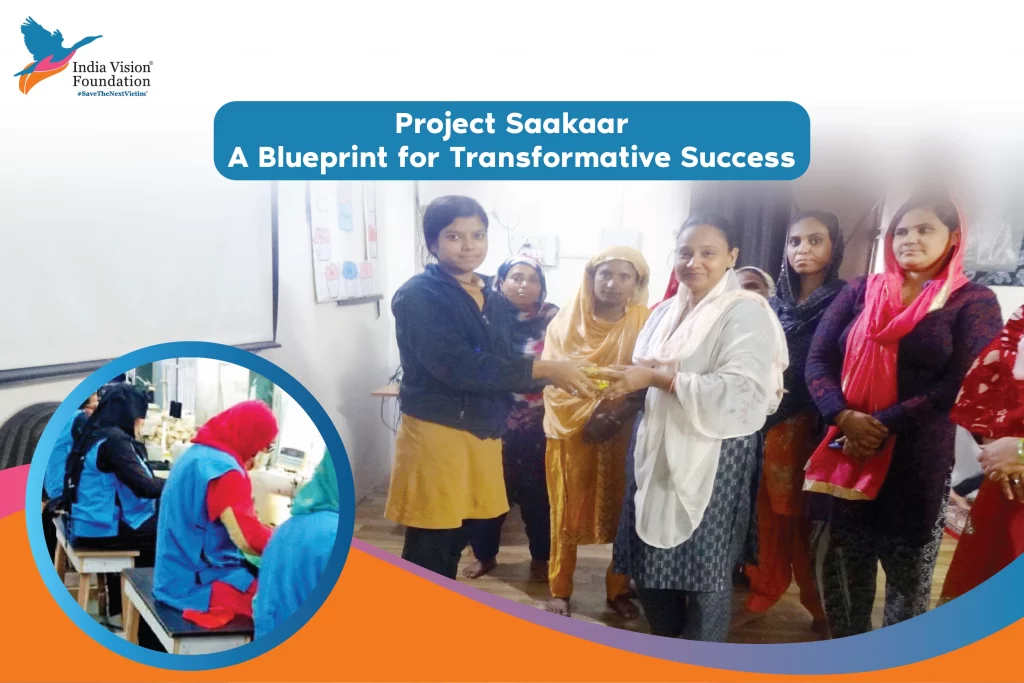Introduction:
In a world rife with social challenges, organizations like the India Vision Foundation shine as beacons of hope, pioneering transformative initiatives aimed at creating a more just and equitable society.
Among its notable endeavours, Project Saakaar stands out as a blueprint for transformative success, encapsulating India Vision Foundation’s commitment to empowering marginalised communities and driving sustainable change.
In this blog, we delve into the essence of Project Saakaar and its impact on society.
Understanding Project Saakaar:
- Origins and Objectives:
- Project Saakaar was conceived with the vision of addressing the multifaceted challenges faced by marginalised communities, particularly in the areas of education, healthcare, and socio-economic empowerment.
- Its objectives encompass fostering holistic development, promoting gender equality, and building resilient communities capable of charting their path towards a brighter future.
- Comprehensive Approach:
- Unlike conventional charity models, Project Saakaar adopts a comprehensive approach that goes beyond mere handouts, focusing instead on empowering communities through education, skill development, and sustainable livelihood initiatives.
- By addressing the root causes of poverty and marginalization, the project aims to create lasting change that uplifts individuals and transforms entire communities.
- Key Components:
- Education Empowerment: Project Saakaar prioritises education as a catalyst for social mobility, offering scholarships, mentorship programs, and educational resources to marginalised children and youth.
- Healthcare Access: Recognising the fundamental right to healthcare, the project facilitates access to quality healthcare services, including preventive care, treatment, and health education initiatives.
- Livelihood Opportunities: Through vocational training and entrepreneurship development programs, Project Saakaar equips individuals with the skills and resources needed to pursue sustainable livelihoods, thereby breaking the cycle of poverty.
- Community Engagement:
- At the heart of Project Saakaar lies community engagement, wherein local stakeholders are actively involved in the planning, implementation, and evaluation of initiatives.
- By fostering a sense of ownership and agency among community members, the project ensures the sustainability and relevance of interventions tailored to the unique needs of each locality.
Impact and Success Stories:
Educational Transformation:
- Academic Excellence: Project Saakaar has not only provided financial assistance but also academic support, including tutoring and mentorship, to ensure that beneficiaries excel in their studies. Many students who once struggled academically have shown remarkable improvement and achieved academic excellence.
- Access to Higher Education: Beyond primary and secondary education, Project Saakaar has facilitated access to higher education for deserving students from marginalised backgrounds. This has opened doors to prestigious universities and professional courses, enabling beneficiaries to pursue their dreams and aspirations.
- Empowerment Through Knowledge: Education is a powerful tool for empowerment, and Project Saakaar has equipped beneficiaries with the knowledge and skills needed to advocate for their rights, challenge social norms, and contribute meaningfully to society. Many alumni of the program have become leaders and change-makers in their communities.
Healthcare Accessibility:
- Community Health Awareness: Project Saakaar’s healthcare initiatives extend beyond treatment to focus on preventive care and health education. Through community outreach programs, health camps, and workshops, the project has raised awareness about important health issues such as hygiene, nutrition, and disease prevention, empowering individuals to take control of their health.
- Improved Maternal and Child Health: Targeted interventions aimed at improving maternal and child health have yielded significant results, with reduced maternal mortality rates, fewer instances of malnutrition among children, and increased access to essential healthcare services during pregnancy and childbirth.
- Specialised Healthcare Services: Project Saakaar has collaborated with healthcare professionals and organizations to provide specialised services such as eye care, dental care, and mental health support to marginalised communities. These services, often inaccessible or unaffordable, have had a profound impact on the overall well-being of beneficiaries.
Economic Empowerment:
- Skill Diversification: In addition to traditional vocational training, Project Saakaar has recognised the importance of diversifying skill sets to meet the demands of a rapidly changing economy. Beneficiaries are trained in a range of fields, including digital literacy, e-commerce, and green technologies, enhancing their employability and adaptability in a competitive job market.
- Microenterprise Development: Beyond employment opportunities, Project Saakaar has supported the establishment of microenterprises and self-help groups, empowering individuals to become entrepreneurs and generate sustainable income. These ventures, ranging from small-scale agriculture to artisanal crafts, not only provide financial stability but also contribute to local economic growth and resilience.
- Financial Literacy and Inclusion: Economic empowerment goes hand in hand with financial literacy and inclusion. Project Saakaar offers financial education workshops and facilitates access to banking services and microfinance opportunities, empowering beneficiaries to make informed financial decisions, build savings, and invest in their future.
Challenges and Lessons Learned:
- Resource Constraints:
- Limited funding and resources pose significant challenges to the scalability and sustainability of Project Saakaar, necessitating innovative approaches to maximize impact within budgetary constraints.
- Socio-cultural Barriers:
- Deep-seated socio-cultural norms and attitudes can impede the effectiveness of interventions, highlighting the importance of culturally sensitive approaches and community dialogue in driving social change.
- Policy Advocacy:
- While Project Saakaar has achieved commendable results at the grassroots level, systemic change requires broader policy reforms and advocacy efforts aimed at addressing structural inequalities and systemic barriers to development.
- Collaboration and Partnerships:
- Collaboration with government agencies, NGOs, and other stakeholders is crucial for scaling up Project Saakaar and leveraging complementary resources and expertise to maximize impact.
Conclusion:
Project Saakaar stands as a testament to the transformative power of grassroots initiatives in driving sustainable change and empowering marginalised communities. By prioritising education, healthcare, and socio-economic empowerment, India Vision Foundation has laid a blueprint for transformative success that transcends charity and fosters long-term resilience and self-reliance.
As we look towards the future, let us draw inspiration from Project Saakaar’s ethos of compassion, empowerment, and solidarity, working together to build a more inclusive and equitable world for all.


